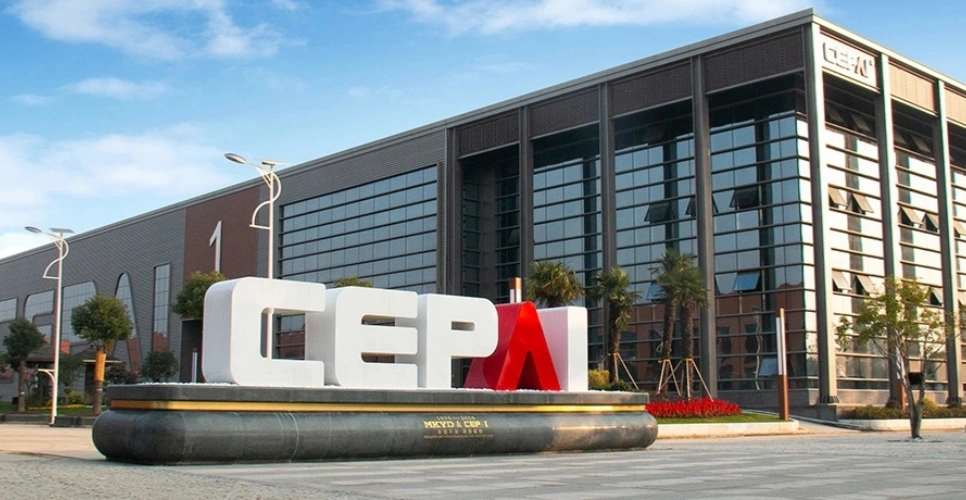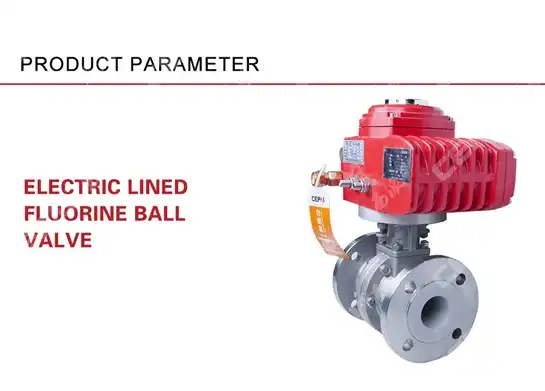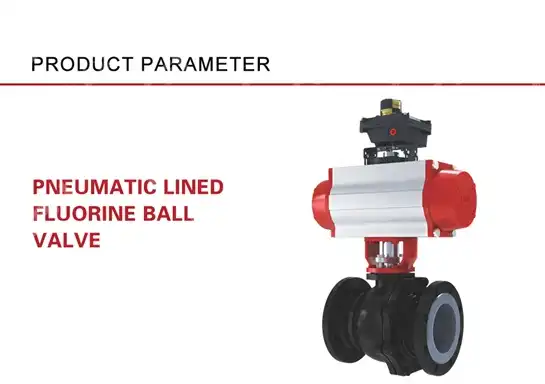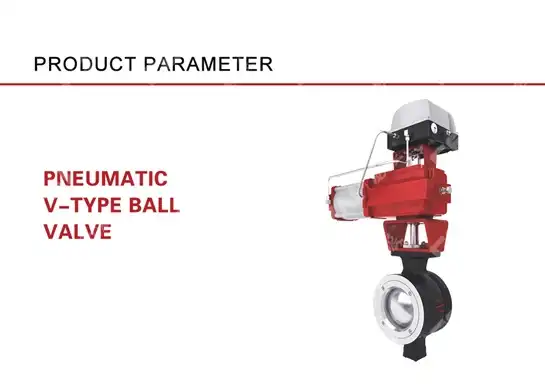Best Practices for Installing an Electric Ball Valve for Water Systems
Water system failures caused by improper valve installation can result in catastrophic flooding, costly downtime, and equipment damage that could have been prevented. Whether you're managing a municipal water treatment facility, industrial processing plant, or commercial building's water infrastructure, the proper installation of an Electric Ball Valve is crucial for maintaining system integrity, preventing leaks, and ensuring optimal flow control. This comprehensive guide provides essential best practices that will help you avoid common installation pitfalls and maximize the performance and longevity of your Electric Ball Valve in water systems.
Pre-Installation Planning for Electric Ball Valve Systems
-
System Assessment and Valve Selection
Before beginning any Electric Ball Valve installation, conducting a thorough system assessment is paramount to project success. When selecting an electric ball valve to use in your system, always pay attention to your unique needs and industry standards, if any. You can also consult a trusted professional to avoid possible selection mistakes. This evaluation should encompass pressure requirements, temperature ranges, flow rates, and the specific characteristics of the water being handled. The selection process for an Electric Ball Valve must consider multiple technical parameters that directly impact installation requirements. Water quality analysis becomes particularly important when dealing with potable water systems, as certain materials and coatings may be required to maintain water safety standards. Additionally, the electrical specifications of the actuator must match the available power supply at the installation site, including voltage requirements, power consumption, and control signal compatibility. Environmental factors at the installation location significantly influence both valve selection and installation methodology. Outdoor installations require Electric Ball Valve units with appropriate weather protection ratings, while indoor installations in confined spaces may necessitate compact actuator designs. The ambient temperature range at the installation site must be within the operational limits of both the valve body and the electric actuator to ensure reliable long-term performance.

-
Essential Tools and Materials Preparation
Install a filter upstream of the valve if the system's media is not clean to prevent damage and blockages. Prepare the proper tools and fittings for installation, including an adjustable wrench or multiple wrenches and the correct fittings (threaded or welded) for the system. Professional installation of an Electric Ball Valve requires specific tools and materials that must be gathered before beginning work to avoid project delays and ensure proper installation procedures. The tool inventory should include precision torque wrenches calibrated to the manufacturer's specifications, as over-tightening or under-tightening connections can compromise seal integrity or damage valve components. Pipe threading equipment, cutting tools, and alignment devices are essential for preparing pipe ends and ensuring proper valve positioning. For electric connections, qualified electrical tools including wire strippers, multimeters, and appropriate conduit fittings must be available. Material preparation extends beyond the Electric Ball Valve itself to include compatible gaskets, sealants, and thread compounds that are approved for potable water systems if applicable. The selection of pipe sealants must be compatible with both the valve materials and the system media, as incompatible materials can cause seal degradation or contamination issues. Backup sealing materials should be readily available in case primary seals are damaged during installation.
Electric Ball Valve Installation Procedures
-
Proper Valve Positioning and Orientation
Ball valves may be installed in vertical or horizontal pipe runs, they are bi-directional therefore flow direction is not critical, however the best practice is to set up the valve handle to point in the direction of flow whenever possible, while vertically installing the valve with the stem pointing upwards is the optimal orientation for most applications. The positioning of an Electric Ball Valve within a water system significantly impacts both its operational performance and maintenance accessibility. When installing an Electric Ball Valve in horizontal pipe runs, the actuator should be positioned to allow easy access for maintenance while protecting electrical connections from potential water exposure. The valve body orientation should consider the natural settling of any particulates in the water system, positioning the ball and seat areas to minimize debris accumulation. For vertical installations, electric actuators usually require vertical installation with proper support structures to bear the additional weight of the actuator assembly. Access considerations for maintenance and operation must be incorporated into the positioning decision. The Electric Ball Valve should be installed with sufficient clearance around the actuator for electrical connections, position feedback devices, and potential actuator removal if service is required. Emergency manual override capabilities should remain accessible even when the actuator is installed, ensuring system operability during power outages or actuator failures.
-
Connection Methods and Sealing Techniques
Ball valves can be installed using various connection methods, such as threaded, glued-sleeve, and flanged connections, each requiring specific installation procedures for Electric Ball Valve applications. The choice of connection method depends on pipe material, system pressure, maintenance requirements, and local plumbing codes that govern water system installations. Threaded connections for Electric Ball Valve installations require careful attention to thread engagement and sealing compound application. Apply Teflon tape or thread sealant for leak prevention using the appropriate number of wraps and ensuring that sealing materials do not interfere with full thread engagement. The threading process should be performed slowly to avoid cross-threading, which can damage both the valve and pipe threads. Flanged connections provide the most robust mounting method for larger Electric Ball Valve installations and allow for easier maintenance access. Proper flange alignment is crucial, as misalignment can cause gasket failure and create stress concentrations in the valve body. Bolt tightening should follow a cross-pattern sequence with specified torque values to ensure even gasket compression and prevent flange warping.
Electrical Integration and Control Systems
-
Power Supply and Wiring Requirements
The electrical integration of an Electric Ball Valve requires careful attention to power supply specifications, control signal compatibility, and safety compliance with local electrical codes. The actuator's electrical requirements must be verified against available power sources, including voltage, frequency, and current capacity to ensure reliable operation without overloading existing electrical systems. Control system integration involves connecting position feedback signals, limit switches, and communication interfaces that allow the Electric Ball Valve to operate within automated water management systems. Modern Electric Ball Valve actuators often include advanced features such as partial stroke testing, diagnostic capabilities, and remote monitoring functions that require proper network connections and configuration. Safety considerations for electrical installations include proper grounding, overcurrent protection, and emergency stop capabilities that can immediately halt valve operation if dangerous conditions are detected. The electrical enclosure rating must be appropriate for the installation environment, with higher IP ratings required for outdoor or wet locations where the Electric Ball Valve may be exposed to moisture.
-
Control Signal Calibration and Testing
After completing the electrical connections, the Electric Ball Valve control system requires calibration to ensure accurate position control and proper response to automation signals. This process involves setting limit switches for fully open and closed positions, adjusting travel speeds, and configuring any torque limiting features that protect the valve from damage due to foreign objects or system overpressure. Position feedback calibration ensures that the control system accurately knows the valve position at all times, enabling precise flow control and preventing system conflicts. Many Electric Ball Valve actuators include self-calibration routines that automatically determine the valve stroke length and set appropriate position reference points during initial commissioning. Communication protocol configuration allows the Electric Ball Valve to integrate with building automation systems, SCADA networks, or other control platforms used in water system management. Proper configuration ensures reliable data exchange and enables advanced features such as predictive maintenance scheduling and remote diagnostics.
System Testing and Commissioning
-
Pressure Testing Protocols
Verify the pressure rating of the valve vs the application requirement. Verify the temperature rating of the valve vs the application requirement before conducting pressure tests that validate the integrity of the Electric Ball Valve installation. The testing protocol should gradually increase system pressure while monitoring for leaks, unusual noises, or performance anomalies that could indicate installation problems. Initial pressure testing should begin at low pressures to identify obvious leaks or connection problems before subjecting the system to full operating pressure. Each connection point around the Electric Ball Valve should be individually inspected during pressure testing, as different connection types may exhibit different failure modes under pressure. Visual inspection should be supplemented with bubble testing using approved solutions for small leak detection. Full system pressure testing validates the Electric Ball Valve installation under normal operating conditions and should include cycling the valve through its full range of motion under pressure. This dynamic testing reveals potential issues with seal performance, actuator torque requirements, or control system response that might not be apparent during static testing. Documentation of pressure test results provides baseline data for future maintenance and troubleshooting activities.
-
Functional Verification and Performance Testing
Comprehensive functional testing of an Electric Ball Valve installation verifies that all system components operate correctly under various conditions that may be encountered during normal service. This testing should include full stroke operation, partial positioning accuracy, emergency stop response, and manual override functionality to ensure complete system reliability. Response time testing measures the Electric Ball Valve's ability to respond to control signals within specified timeframes, which is particularly important in water systems where rapid shutoff may be required for safety or process control. The testing should include both opening and closing operations under various flow conditions to verify consistent performance across the valve's operating range. Control system integration testing validates proper communication between the Electric Ball Valve and other system components, ensuring that position feedback, alarm signals, and remote control functions operate as designed. This testing should include simulated failure conditions to verify that the system responds appropriately to various fault scenarios and maintains safe operation.
Maintenance Best Practices and Troubleshooting

-
Preventive Maintenance Scheduling
Regular maintenance of Electric Ball Valve installations is essential for reliable water system operation and extends equipment service life significantly beyond what would be achieved with reactive maintenance approaches. A structured preventive maintenance program should be established immediately following installation commissioning, with maintenance intervals based on manufacturer recommendations, operating conditions, and system criticality. The maintenance schedule for an Electric Ball Valve should include regular inspection of electrical connections, actuator lubrication, seal condition assessment, and control system function verification. Electrical components require periodic inspection for corrosion, loose connections, and insulation integrity, as these issues can lead to actuator failure or safety hazards. Mechanical components such as stem seals, body gaskets, and mounting hardware should be inspected for wear or damage that could compromise system integrity. Advanced maintenance techniques for Electric Ball Valve systems include vibration analysis, thermographic inspection, and electrical signature analysis that can detect developing problems before they cause system failures. These predictive maintenance approaches are particularly valuable in critical water system applications where unplanned downtime must be minimized.
-
Common Installation Issues and Solutions
Improper valve orientation represents one of the most frequent installation errors that can significantly impact Electric Ball Valve performance and longevity. To prevent issues like leaks, inefficiencies, or system failure, follow these best practices: Check the manufacturer's markings and documentation. Ensure the valve handle aligns with the intended flow direction whenever possible to optimize performance. Electrical connection problems often manifest as intermittent operation, position feedback errors, or complete actuator failure. These issues frequently result from inadequate protection against moisture infiltration, improper wire routing that allows mechanical damage, or incorrect connection of control signals. Systematic troubleshooting should begin with verification of power supply voltage and continue through signal integrity testing to isolate the specific cause of electrical problems. Seal leakage issues may develop immediately after installation or gradually over time, depending on the root cause of the problem. Installation-related seal failures often result from over-tightening connections, misalignment of mating surfaces, or contamination of sealing surfaces during assembly. Long-term seal degradation typically indicates compatibility issues between seal materials and system media, or operating conditions that exceed the seal's design parameters.
Conclusion
Proper installation of an Electric Ball Valve in water systems requires meticulous attention to pre-installation planning, precise execution of installation procedures, comprehensive testing protocols, and ongoing maintenance commitment. Following these best practices ensures reliable system operation, minimizes maintenance costs, and maximizes equipment service life while maintaining the safety and efficiency that water system applications demand.
Cooperate with CEPAI Group Co., LTD.
As a leading China Electric Ball Valve manufacturer, CEPAI Group Co., LTD. has been at the forefront of valve innovation since 2009, combining advanced manufacturing capabilities with rigorous quality standards. Our state-of-the-art facility in Jiangsu Province spans 56,000 square meters and features the longest high-precision intelligent manufacturing production line in the Asia-Pacific region, ensuring consistent quality and delivery reliability for Electric Ball Valve solutions.
CEPAI's comprehensive certifications including API Q1, API 6A, API 6D, ISO 9001, and CE marking demonstrate our commitment to international standards and quality excellence. As a trusted China Electric Ball Valve supplier, we maintain strategic partnerships with major energy companies including PetroChina, Sinopec, and CNOOC, validating our technical expertise and manufacturing capabilities in demanding applications.
Our intelligent manufacturing approach incorporates advanced testing equipment and comprehensive quality control systems that guarantee every Electric Ball Valve meets stringent performance standards. From blank castings to final products, we employ advanced inspection methods and testing equipment throughout the entire production process, ensuring zero defects and superior reliability for water system applications.
Whether you need standard Electric Ball Valve configurations or customized solutions for specific water system requirements, CEPAI Group offers complete technical support from initial consultation through installation and ongoing maintenance. As a premier China Electric Ball Valve wholesale provider, we deliver High Quality Electric Ball Valve solutions at competitive Electric Ball Valve prices, backed by comprehensive warranty coverage and responsive technical support.
Contact our engineering team at cepai@cepai.com to discuss your Electric Ball Valve requirements and discover why leading companies worldwide choose CEPAI as their preferred China Electric Ball Valve factory partner. Electric Ball Valve for sale inquiries are welcomed, and our technical specialists are ready to provide detailed specifications and application guidance for your specific water system needs.
FAQ
Q: What is the optimal orientation for installing an Electric Ball Valve in water systems?
A: The optimal orientation is vertical installation with the actuator stem pointing upward, though horizontal installation is acceptable when access and maintenance requirements dictate this positioning.
Q: How do I determine the correct torque specifications for Electric Ball Valve connections?
A: Torque specifications should always follow the manufacturer's recommendations found in the installation manual, as over-tightening can damage seals while under-tightening may cause leaks.
Q: What electrical safety considerations are essential for Electric Ball Valve installations?
A: Key safety considerations include proper grounding, appropriate overcurrent protection, moisture-resistant enclosures rated for the installation environment, and emergency stop capabilities.
Q: How often should Electric Ball Valve systems undergo maintenance inspection?
A: Maintenance intervals depend on operating conditions, but typically quarterly electrical inspections and semi-annual mechanical inspections are recommended for critical water system applications.
References
1. "Industrial Valve Installation and Maintenance Guidelines" by Robert H. Anderson, Professional Engineering Publications
2. "Electric Actuator Systems for Process Control Applications" by Michael J. Thompson, Industrial Press
3. "Water System Valve Selection and Installation Practices" by Jennifer L. Martinez, American Water Works Association
4. "Automated Valve Control Systems: Design and Implementation" by David K. Patterson, McGraw-Hill Professional
_1746598568348.webp)
Get professional pre-sales technical consultation and valve selection services, customized solution services.

About CEPAI


